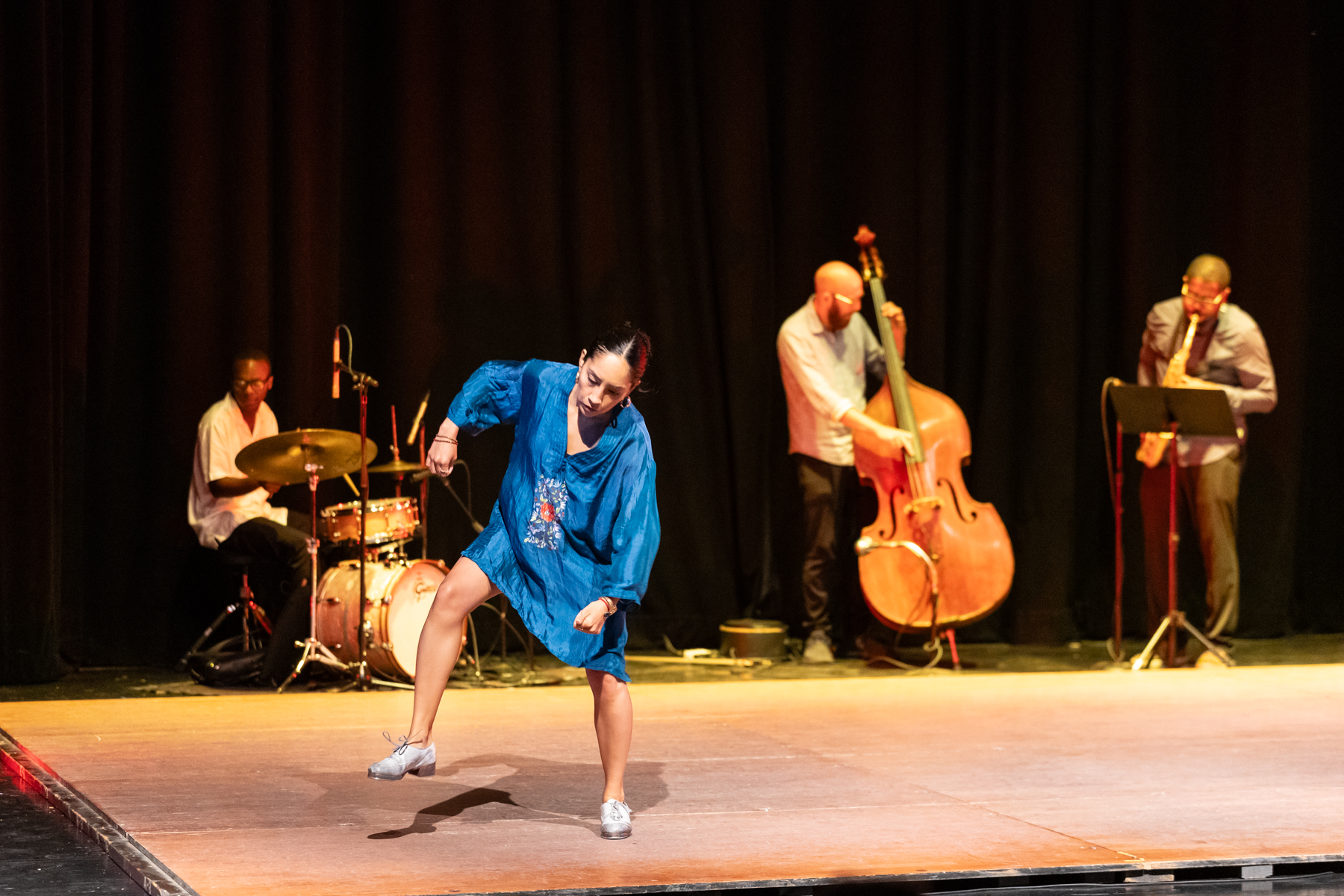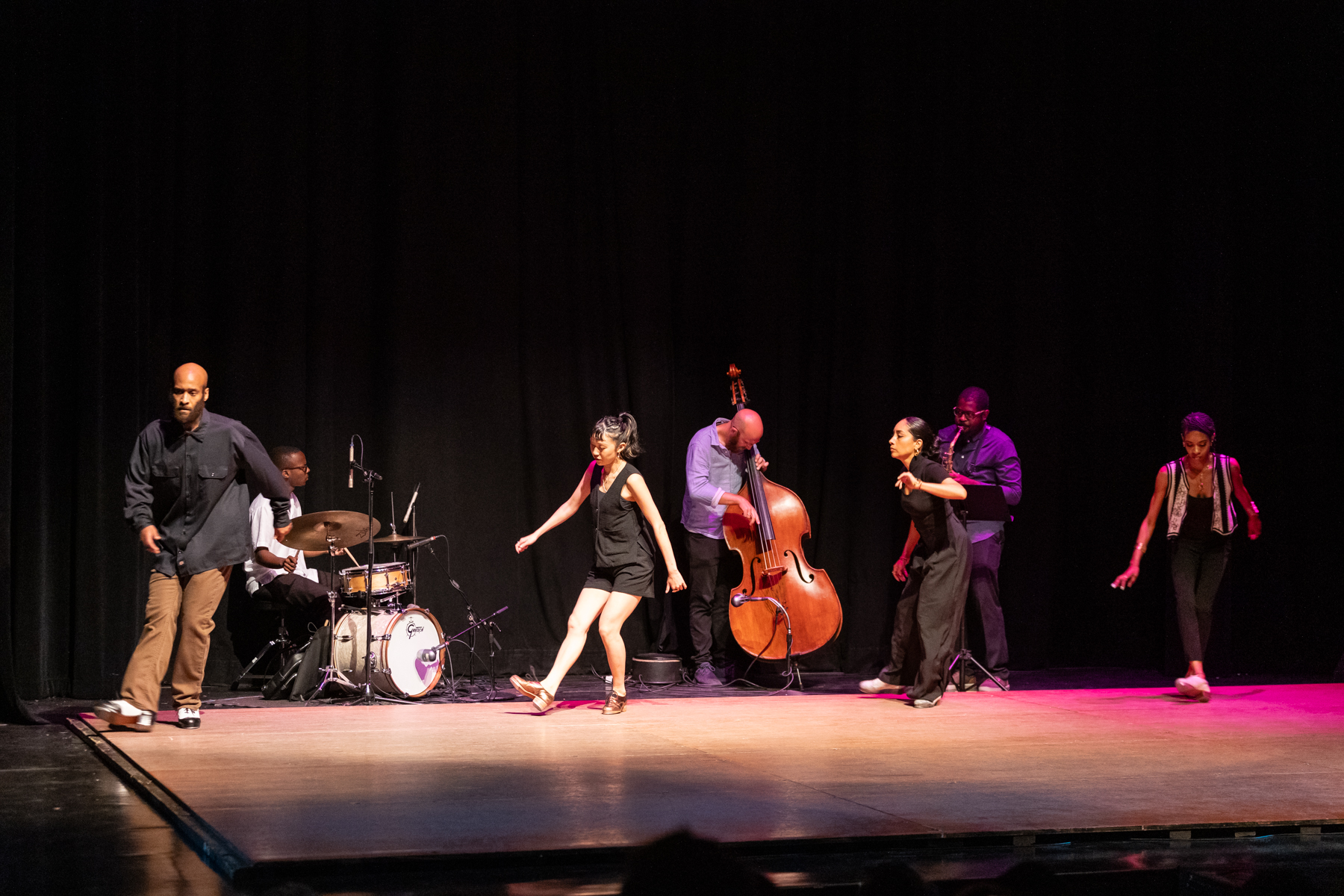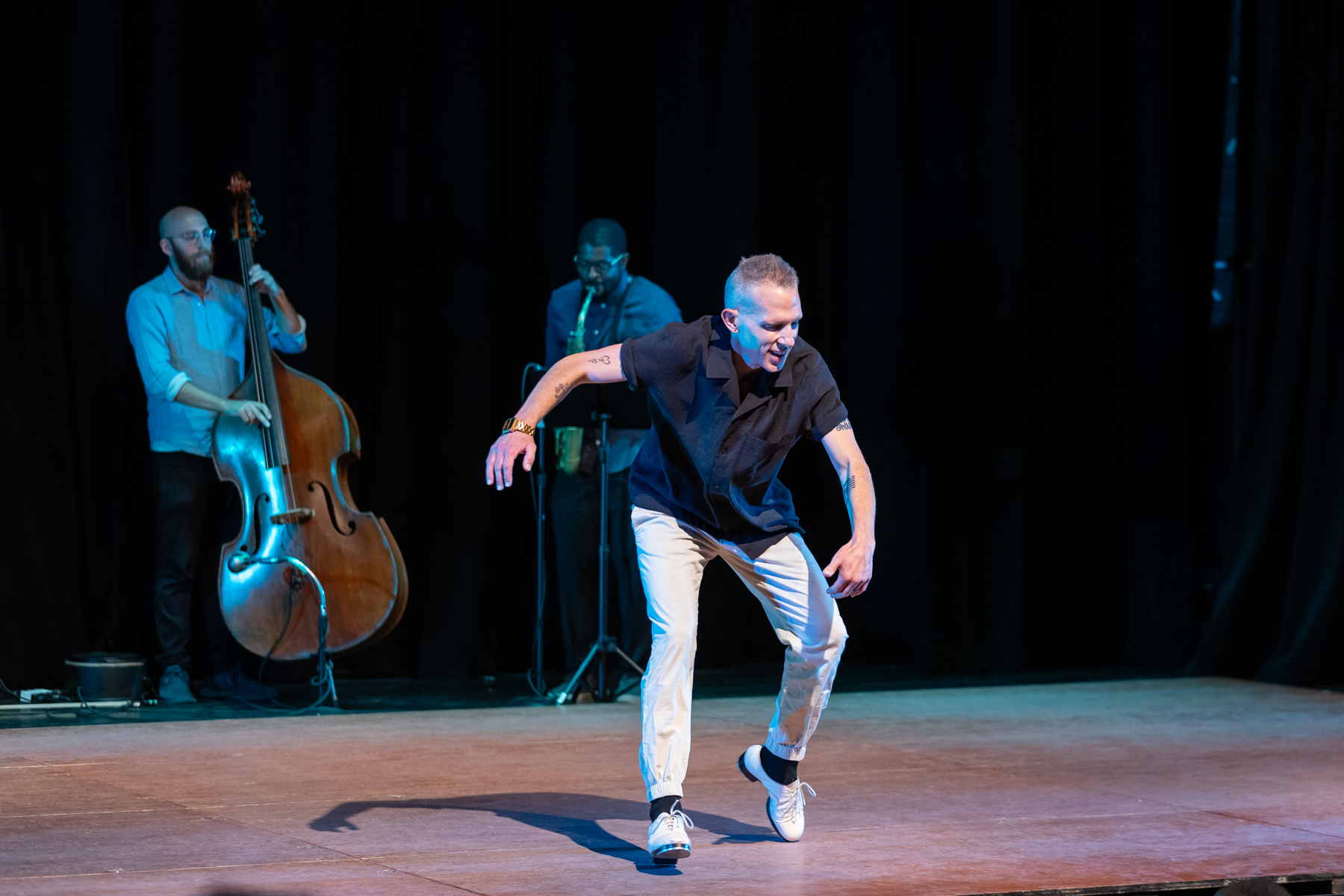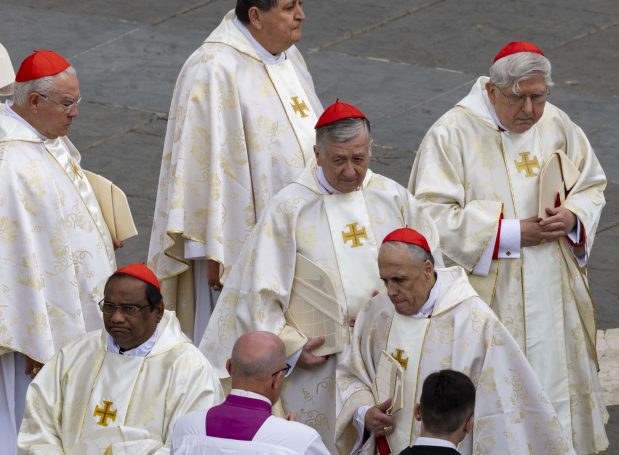For more than three decades, hoofers-in-training have convened in downtown Chicago for Rhythm World. The meat and potatoes of this storied tap dance festival is its classes, which kicked off Friday with about 100 students at the Fine Arts Building.
Chicago owes its status as one of the world’s top tap cities, in large part, to Rhythm World, organized by the Chicago Human Rhythm Project and the longest-running festival of its kind. For tap dancers and fans, Rhythm World is a pilgrimage — a chance to see the field’s greatest titans and next-gen change makers hitting the wood together.
The first of four public performances took place Sunday in Washington Park with a showcase at the DuSable Black History Museum. Tuesday evening, the CHRP Jubilee Gala takes place at the Jazz Showcase in Printer’s Row. And on Wednesday and Friday, a pair of public performances are scheduled at the Studebaker Theatre in the Fine Arts Building.
The DuSable’s Black Legislators’ Auditorium hasn’t often been used for dance — a shame given its good sightlines, prime location and right-sized house for more intimate productions like this one. But the venue’s lack of experience with dance unfortunately showed in technical bobbles and weird lighting choices, which could have worked for a Pearl Jam cover band, for example, but couldn’t match the pure magic taking place on that stage.
CHRP artistic director and master of ceremonies Jumaane Taylor introduced the evening’s four incredible soloists, coming one-by-one as the back half of the program. First among them was Japanese hoofer Naomi Funaki, who’s recently been turning heads in New York and has a growing collection of accolades.
Funaki is a soft-spoken soloist, playing with — not on top of — the Brent Griffin Jr. Trio’s rendition of Wayne Shorter’s 1966 standard, “Footprints.” Listen closely, though, and her lithe frame packs a big, complex punch, particularly when she positions herself close to the musicians.
Melissa Almaguer, by contrast, is part-dancer, part-band leader in this arrangement of Eric Dolphy’s 1963 “Iron Man.” By turns, Almaguer faces the band, swirling an index finger at drummer Frank Morrison, inviting him to a duel, or taunting bassist Ethan Philion. They are more than happy to oblige. At intervals, Almaguer allows the fluid and malleable undertones coursing through her feet to affect her torso, folding at the waist or taking these sensations into outstretched arms, somewhat reminiscent of Ian Berg, once a staple of this festival.
Taylor introduces Funaki and Almaguer as “young lionesses,” the next-gen stewards of a form transmitted not through books but from feet to feet. Rhythm World frequent flyers Jason Janas and Cartier Williams, with Taylor, are the evening’s veterans, once “young lions” themselves. Taken together, along with festival honoree Derick K. Grant, creator of “Imagine Tap!,” one gets a sense of where tap comes from, where it is and where it’s going.
Case in point: Williams’ tutelage includes masters like Gregory Hines, Jimmy Slyde, Buster Brown and the Nicholas Brothers, all discernable influences in his dazzling-yet-cool rendition of Count Basie’s “Cute.” Janas is perhaps the cheekiest of the bunch. His selection, George Shearing’s “Lullaby of Birdland,” is ushered in by an a capella solo that is somehow both Gregory Hines and Mikhail Baryshnikov from “White Nights.”
These and Taylor’s musical offerings — a simply stunning mano-a-mano improvised duet with alto saxophonist Brent Griffin Jr. that finds its way into a swinging groove — are a necessary reminder of tap dance’s roots and branches. Taylor’s choreographed work-in-progress called “Ugly Flavors” does something entirely different.
Fans of Taylor, this critic among them, have been patiently waiting for something to follow his masterful “Supreme Love.” Nearly 10 years later, we’re still waiting. But “Ugly Flavors” may turn out to be the thing that tells “Supreme Love” to hold its beer.
“Supreme Love” tackled John Coltrane’s “A Love Supreme,” exhibit A of jazz’s bebop era, a style of music many deemed “undanceable.” Taylor set out to prove a point that tap is jazz of any era, approaching the music with unparalleled corporeal and spiritual reverence. “Ugly Flavors” is, in some ways, a variation on that theme, with an ensemble of Taylor, Almaguer, Funaki and Keyana Latimer confronting two more “undanceable” charts: Igor Stravinsky’s “Rite of Spring” and Ornette Colman’s “Lonely Woman” from his seminal album “The Shape of Jazz to Come.” The first is thought, by some, to mark the birth of modernism; the second, played live by Brent Griffin Jr. and cronies, ushered in a sub-genre now called free jazz.
From this bite-sized amuse-bouche of what is likely to be Taylor’s next masterpiece, one sees a full-tilt rhythmic interrogation, dissection and extrapolation. It’s genius — and unfinished. For now, “Ugly Flavors” is still a bit of an intellectual exercise missing the elusive thread that ties the piece together.
To be clear, Taylor has not declared “Ugly Flavors” to be done, despite chipping away at it for nearly four years. Now that he has the “what” and the “how,” the “why” is something he’s still searching for.
Lauren Warnecke is a freelance critic.
Review: Chicago Human Rhythm Project’s Rhythm World (3.5 stars)
When: Additional performances 6:30 p.m. July 16 and 7 p.m. July 17 and 19
Where: DuSable Black History Museum and Education Center, 740 E. 56th Place. The July 16 gala is at Jazz Showcase, 806 S. Plymouth Court; then July 17 and 19 at the Studebaker Theatre, 410 S. Michigan Ave.
Running time: 90 minutes
Tickets: Gala tickets are $250-$275; otherwise free with reservations at chicagotap.org







